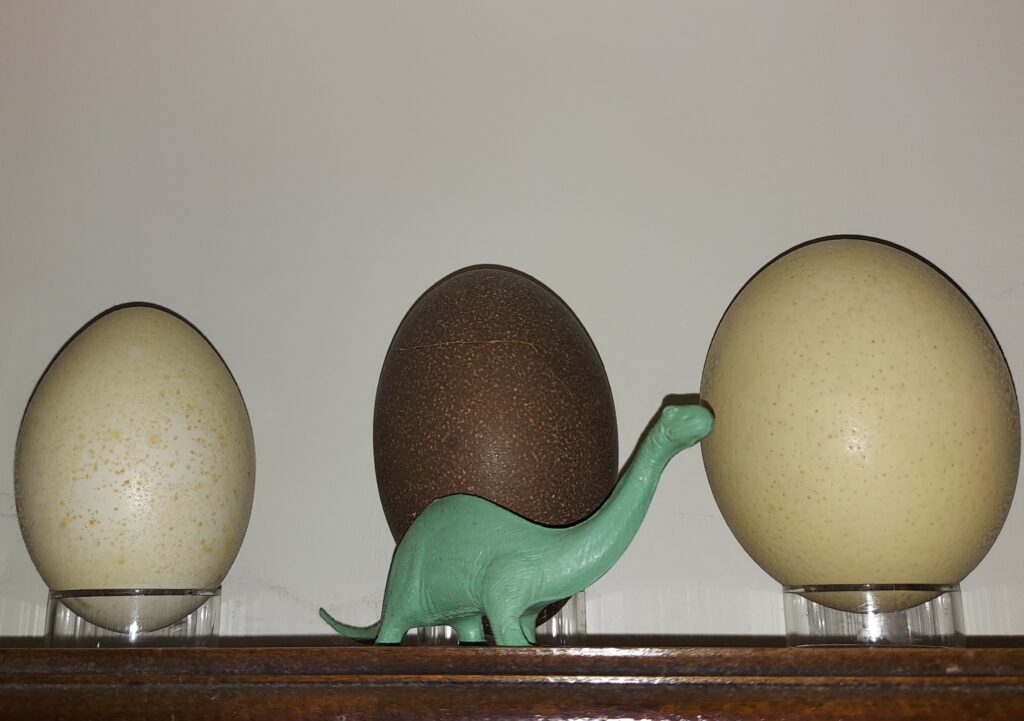Which Came First? The Egg? The Chicken? The Dinosaur? The Snake in the grass?

As long as you didn’t answer, “The egg,” you are more or less correct, and it is easy to see why, now that our understanding of egg history—or, more accurately, prehistory—has been revised by researchers from China’s Nanjing University and England’s University of Bristol. It is becoming apparent, thanks to these scientists, that the early ancestors of reptiles, birds, and mammals may have borne live young and that egg-laying came later. This idea flies in the face of an established scientific hypothesis that the shelled egg was key to the success of the vertebrates that first invaded the land, arising from water-dwelling species. The shelled egg, according to this hypothesis, made that invasion possible by providing embryos with a protective coating until they had developed to the point of being able to survive outside. The new research suggests that these early land explorers succeeded not because of eggs but because of an older reproductive strategy.
The Beginning of the Egg (brace yourself for scientific jargon)
The Nanjing/Bristol universities’ study of 51 fossil and 29 living species that could be categorized as oviparous (laying hard or soft-shelled eggs) or viviparous (giving birth to live young) suggests that the ancestors of mammals, of lizards and their relatives, and of dinosaurs, crocodilians, and birds were all viviparous and also engaged in another reproductive strategy called extended embryo retention, or EER, in which the young are retained by the mother for a varying amount of time before giving birth to live young, likely depending on when conditions are best for survival.
You may have noticed that the animals mentioned above are all terrestrial vertebrates (animals with backbones). Aquatic or marine vertebrate species, including fish, frogs, and salamanders, would lay shell-less eggs in water, indeed had to do so, as their eggs would dry out and die on land, as would adult versions of most of these species if they couldn’t get to water at least periodically. About 320 million years ago—as Michael Benton, a professor from Bristol’s School of Earth Sciences, explained in a university press release—some species (which gave rise, eventually, to reptiles, mammals, birds, and so on) escaped the watery world when they evolved waterproof skin and other ways to limit water loss. Traditional scientific thinking has suggested that these terrestrial explorers evolved the shelled egg, which, said Benton, has been called a sort of “private pond” in which the developing embryos are protected from drying on land, enabling the early land-dwellers to move away from the waterside and dominate terrestrial ecosystems. This hypothesis is sometimes called the reptile-egg model.
The new research by the Bristol/Nanjing research team suggests that early terrestrial species evolved EER before shelled eggs came on the scene, keeping live young inside the reproductive tract until conditions were right to give birth. EER, not shelled eggs, enabled the move to land.
A New Idea about Chickens and Eggs
The evolution of shelled eggs, and the switch from viviparous to oviparous reproduction, can almost be seen right before our eyes. Project Leader Baoyu Jiang said, “Sometimes, closely related species [of lizards] show both behaviors, and it turns out that live-bearing lizards can flip back to laying eggs much more easily than had been assumed.”
This flexibility has an ancient lineage, says another of the researchers, Armin Elsler: “Also, when we look at fossils, we find that many of them were live-bearers, including the Mesozoic marine reptiles like ichthyosaurs and plesiosaurs. Other fossils . . . show the to-and-fro between oviparity and viviparity happened in other groups, not just in lizards.”
According to researcher Joseph Keating, “EER is common and variable in lizards and snakes today. Their young can be released, either inside an egg or as little wrigglers, at different developmental stages, and there appears to be ecological advantages of EER, perhaps allowing the mothers to release their young when temperatures are warm enough and food supplies are rich.”
Benton concluded, “Our work, and that of many others in recent years, has consigned the classic ‘reptile egg’ model of the textbooks to the wastebasket.” Early terrestrial species “had evolved extended embryo retention rather than a hard-shelled egg to protect the developing embryo for a lesser or greater amount of time inside the mother, so birth could be delayed until environments become favorable.”
In short, the chicken came before the egg. Or at least, the chicken’s ancestors did.
If you want to check the original source, see ‘Extended embryo retention and viviparity in the first amniotes’ by Baoyu Jiang, Yiming He, Armin Elsler, Shengyu Wang, Joseph N. Ke inating, Junyi Song, Stuart L. Kearns and Michael J. Benton in Nature Ecology & Evolution.
link: https://doi.org/10.1038/s41559-023-02074-0